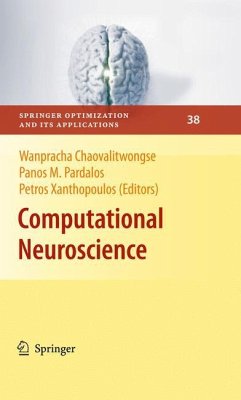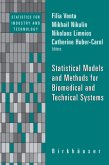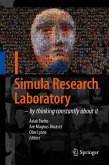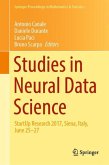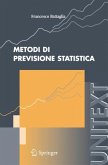This volume includes contributions from numerous disciplines, bridging a vital gap between the mathematical sciences and neuroscience research. This book demonstrates how methods from data mining, signal processing, optimization and cutting-edge medical techniques can be used to tackle the most challenging modern neuroscience problems.
???????????????????????????????????????? ??????????????????. ??????????(460?. ?-360?. ?. ) Thereareinfacttwothings,scienceandopinion;theformerbegetsknowledge,the latterignorance. Hippocrates(460BC-360BC) This book represents a collection of recent advances in computational studies in neuroscience research that practically applies to a collaborative and integrative environment in engineering and medical domains. This work has been designed to address the explosion of interest by academic researchers and practitioners in highly-effective coordination between computational models and tools and quan- tative investigation of neuroscienti?c data. To bridge the vital gap between science and medicine, this book brings together diverse research areas ranging from me- cal signal processing, image analysis, and data mining to neural network modeling, regulation of gene expression, and brain dynamics. We hope that this work will also be of value to investigators and practitioners in academicinstitutions who become involved in computational modeling as an aid in translating information in neuroscienti?c data to their colleagues in medical - main. This volume will be very appealing to graduate (and advanced undergraduate) students, researchers, and practitioners across a wide range of industries (e. g. , ph- maceutical, chemical, biological sciences), who require a detailed overview of the practical aspects of computational modeling in real-life neuroscience problems. For this reason, our audience is assumed to be very diverse and heterogenous, including: vii viii Preface - researchers from engineering, computer science, statistics, and mathematics - mains as well as medical and biological scientists; -physicians working in scienti?c research to understand how basic science can be linked with biological systems.
???????????????????????????????????????? ??????????????????. ??????????(460?. ?-360?. ?. ) Thereareinfacttwothings,scienceandopinion;theformerbegetsknowledge,the latterignorance. Hippocrates(460BC-360BC) This book represents a collection of recent advances in computational studies in neuroscience research that practically applies to a collaborative and integrative environment in engineering and medical domains. This work has been designed to address the explosion of interest by academic researchers and practitioners in highly-effective coordination between computational models and tools and quan- tative investigation of neuroscienti?c data. To bridge the vital gap between science and medicine, this book brings together diverse research areas ranging from me- cal signal processing, image analysis, and data mining to neural network modeling, regulation of gene expression, and brain dynamics. We hope that this work will also be of value to investigators and practitioners in academicinstitutions who become involved in computational modeling as an aid in translating information in neuroscienti?c data to their colleagues in medical - main. This volume will be very appealing to graduate (and advanced undergraduate) students, researchers, and practitioners across a wide range of industries (e. g. , ph- maceutical, chemical, biological sciences), who require a detailed overview of the practical aspects of computational modeling in real-life neuroscience problems. For this reason, our audience is assumed to be very diverse and heterogenous, including: vii viii Preface - researchers from engineering, computer science, statistics, and mathematics - mains as well as medical and biological scientists; -physicians working in scienti?c research to understand how basic science can be linked with biological systems.
From the book reviews:
"This text has a broad overlapping content concerning the biophysics, basic and clinical neurophysiology and neurosurgical approaches to computation. ... I recommend this fascinating book for neurologists, neurosurgeons, physiologists, and intermediate students seeking to augment their knowledge in this burgeoning field of computation." (Joseph J. Grenier, Amazon.com, August, 2014)
"This text has a broad overlapping content concerning the biophysics, basic and clinical neurophysiology and neurosurgical approaches to computation. ... I recommend this fascinating book for neurologists, neurosurgeons, physiologists, and intermediate students seeking to augment their knowledge in this burgeoning field of computation." (Joseph J. Grenier, Amazon.com, August, 2014)

